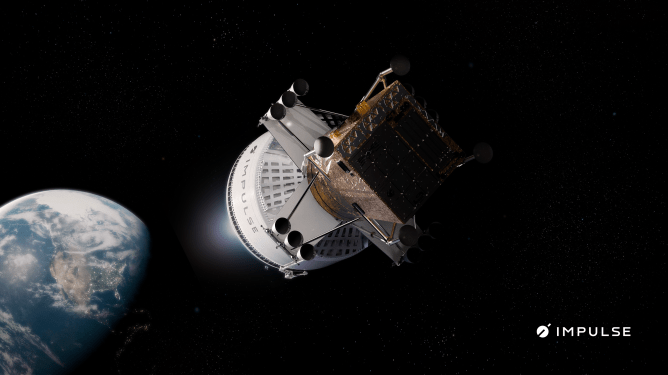Impulse Space unveiled an ambitious plan on Tuesday to use its technology to transport tons of cargo to the moon as early as 2028. The company aims to fill a perceived gap in the current market for mid-sized lunar surface deliveries.
The plan involves pairing a new lunar lander with its Helios high-energy kick stage. This system is designed to move tons of material to the lunar surface without the need for orbital refueling. The objective is to deliver up to six tons of payload to the moon across two missions at a cost-effective price point.
The startup, founded by former SpaceX propulsion chief Tom Mueller, argues this capacity addresses a critical gap in lunar payload logistics. It is intended for cargo that is too large for landers in NASA’s Commercial Lunar Payload Services program yet too small for the human-rated landers being developed by SpaceX and Blue Origin. Payloads in this range, roughly half a ton to 13 tons, could include rovers, habitat modules, power generators, communications systems, or a lunar terrain vehicle.
Under the proposed plan, the lander and kick stage would launch on a standard rocket and deploy in low Earth orbit. The Helios stage would then transport the lander to low lunar orbit within seven days. Following this, the two vehicles would separate, and the lander would make its descent to the surface.
Impulse Space brings deep expertise in spacecraft engine development to this project. Work is already underway on the lunar lander engine, which uses the same fuel combination as the Saiph thrusters on the company’s small Mira spacecraft.
Meanwhile, the Helios stage is reported to be well into development, with its first flight scheduled for late 2026. The company estimates that Helios will be flying multiple times per year by 2028.
Execution risks for the project remain. A lunar lander engine requires throttleability, restart capability, and a high specific impulse to provide precise control in the vacuum of space. The company appeared to hedge its commitment in a statement, saying it stands ready to execute based on industry demand and interest. However, if successful, this initiative would establish a new schedule for lunar deliveries.

